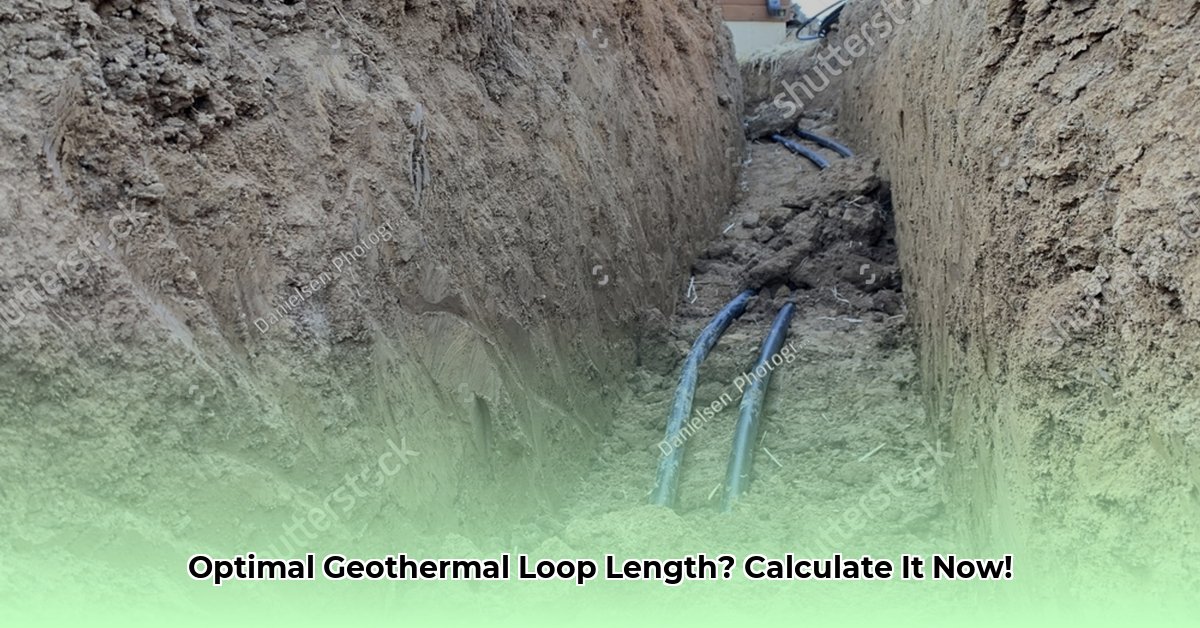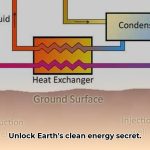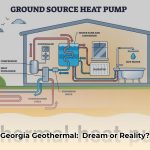Thinking about harnessing the earth’s energy for heating and cooling? Excellent! A geothermal system can be a highly efficient and sustainable way to keep your home comfortable year-round. One of the most critical aspects of a successful geothermal installation is determining the correct length of the underground piping, known as the ground loop. This guide provides a comprehensive overview of how to calculate geothermal loop length, empowering you to understand the key factors involved and make informed decisions.
Understanding the Factors Influencing Loop Length
Several interconnected factors influence the ideal loop length. Understanding these elements is crucial for designing a system that performs efficiently and delivers optimal comfort.
1. Heating and Cooling Load: Sizing Your System
Just as a larger truck needs a more powerful engine, a bigger house typically requires a more robust geothermal system. This “robustness” is directly related to the length of the ground loop. The heating and cooling load, measured in BTUs (British Thermal Units) per hour, represents the peak heating or cooling demand of your home. A professional HVAC technician can accurately calculate your home’s load, which serves as the foundation for loop length calculations.
2. Soil Thermal Conductivity: The Earth’s Role
The type of soil beneath your property significantly impacts how effectively heat can be transferred between the ground and your geothermal system. Soil thermal conductivity, measured in BTU/hr-ft-°F, quantifies this heat transfer capability. Imagine trying to heat a pan on a sandy beach versus a solid stovetop—the stovetop, with its higher conductivity, transfers heat much more efficiently. Similarly, dense, moist clay soil typically conducts heat better than loose, dry sand or gravel. Higher conductivity generally allows for shorter loops. A professional soil test is essential for determining the specific conductivity of your soil.
3. Temperature Difference: Bridging the Gap
The temperature difference between the relatively constant ground temperature below a certain depth and the desired indoor temperature influences the loop length. Larger temperature differences require the system to work harder, which generally translates to a longer loop. Think of it like climbing a hill—a steeper incline (larger temperature difference) demands more effort.
4. Borehole Thermal Resistance (Vertical Systems): The Borehole Factor
For vertical loop systems, where pipes are installed in deep boreholes, borehole thermal resistance becomes a factor. This resistance, influenced by the borehole diameter, grout material, and surrounding soil, affects how efficiently heat can move between the ground and the fluid inside the loop pipes. Higher resistance may necessitate a longer loop to compensate for less efficient heat transfer.
5. Loop Configuration: Horizontal vs. Vertical
The chosen loop configuration—horizontal or vertical—also significantly impacts length calculations. Horizontal loops, installed in shallow trenches, typically require more piping due to their larger surface area. Vertical loops, drilled deep into the ground, can be shorter due to the more stable temperatures at greater depths. Other configurations, like pond/lake loops and open-loop systems, have their own specific length considerations.
6. Antifreeze Solution: The Fluid Dynamic
The fluid circulating within the geothermal loop typically contains antifreeze to prevent freezing and enhance heat transfer. The concentration of this antifreeze mixture affects the fluid’s thermal properties and, consequently, the loop length calculation.
Calculating Geothermal Loop Length: Methods and Approaches
Determining the precise loop length involves several methods, each with varying levels of complexity and accuracy.
1. Simplified Formulas: A Starting Point
Simplified formulas can offer a rough estimate of loop length. However, these formulas often overlook crucial factors and should be used with caution. They are helpful for initial estimations but should not be relied upon for final system design.
A common simplified formula is:
Loop Length (ft) ≈ Heating Load (BTU/hr) / (Soil Conductivity (BTU/hr-ft-°F) * Temperature Difference (°F))
Example: A house with a 60,000 BTU/hr heating load, soil conductivity of 2.5 BTU/hr-ft-°F, and a 20°F temperature difference would require approximately 1,200 feet of loop using this simplified formula. This is a highly simplified example and does not account for all relevant factors.
2. Online Calculators: A Helpful Tool
Several online calculators can provide more refined estimates than simplified formulas. These calculators often incorporate more variables, such as loop configuration and borehole resistance. While helpful, online calculators still rely on simplified models and should be used in conjunction with professional guidance.
3. Professional Software: The Gold Standard
Geothermal professionals utilize specialized software, like GLEHPRO or LoopLink, for accurate and detailed loop length calculations. These programs consider a wide range of factors, including ground conditions, loop configuration, heat pump performance, and local climate data, to provide a comprehensive and optimized design.
Working with a Professional: Essential for Success
While this guide provides valuable information, consulting with a qualified geothermal installer is crucial for a successful installation. They possess the expertise to conduct a thorough site assessment, perform accurate load calculations, analyze your soil, and utilize professional software to design a system tailored to your specific needs.
Troubleshooting and Optimization: Maintaining Efficiency
Even a well-designed geothermal system can encounter issues. Regular maintenance, such as checking fluid levels and pressure, is essential for preventing problems and ensuring optimal performance. If you notice a decline in system efficiency, consult a professional to diagnose and address any potential problems with the loop field or other components.
Future Trends: Geothermal Innovation
The field of geothermal technology is constantly evolving. Researchers are exploring new piping materials, advanced drilling techniques, and smart controls that optimize system performance and integrate with other renewable energy sources like solar power. Staying aware of these advancements can help you make informed decisions about your geothermal investment.
Soil Conductivity Table: A Quick Reference
| Soil Type | Typical Conductivity (BTU/hr-ft-°F) |
|---|---|
| Clay (moist) | 2.0 – 3.0 |
| Sand (dry) | 0.5 – 1.5 |
| Gravel | 1.0 – 2.0 |
| Rock (solid) | 3.0 – 6.0 |
Note: These are typical values. Actual conductivity can vary significantly. A professional soil test is necessary for accurate system design.
By understanding the factors that influence loop length and working with qualified professionals, you can ensure a geothermal system that provides efficient, sustainable, and comfortable heating and cooling for your home for years to come.
- How Did Charles F. Brush Discover Wind Energy Tech? - November 19, 2025
- Wind Energy Vertical: Weighing the Pros and Cons of Wind Power - November 16, 2025
- How Much Energy Does a Wind Turbine Actually Create? - November 14, 2025
















